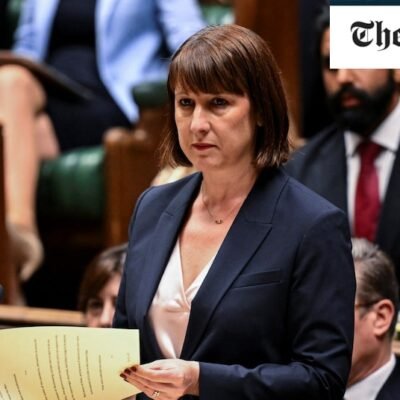Bond markets have been extremely volatile in recent weeks, thanks to President Donald Trump’s tariff announcements. For investors seeking to reduce volatility by diversifying their fixed-income portfolios across sectors, several multisector bond funds have managed to beat the overall bond market in recent years.
To screen for the top funds in this category, we looked for those with the best returns over the last one-, three-, and five-year periods. All names that passed the screen were actively managed.
- Axonic Strategic Income Fund AXSIX
- DoubleLine Flexible Income Fund DFFLX
- NYLI MacKay Strategic Bond Fund MSYEX
Multisector Bond Funds Performance
Over the last 12 months, multisector bond funds have returned 5.93%. On an annualized rate, these funds have returned 3.15% over the last three years and 4.00% over the last five. That compares with the Morningstar US Core Bond Index, which has returned 5.66% over the last 12 months, gained 1.12% per year over the last three years, and lost 0.82% per year over the last five years.
What Are Multisector Bond Funds?
Multisector bond portfolios seek income by diversifying their assets among several fixed-income sectors—usually US government obligations, US corporate bonds, foreign bonds, and high-yield US debt securities. These portfolios typically hold 35%-65% of bond assets in securities that are not rated or are rated by a major agency such as Standard & Poor’s or Moody’s at the level of BB (considered speculative for taxable bonds) and below.
Screening for the Top-Performing Multisector Bond Funds
To find the best multisector bond funds, we looked at returns data from the past one-, three-, and five-year periods using data available in Morningstar Direct. We screened for open-ended and exchange-traded funds in the top 33% of the category using their lowest-cost primary share classes for those periods. We excluded funds with assets under $100 million and analyst coverage that was not 100%. This left three funds.
Because the screen was created with the lowest-cost share class for each fund, some may be listed with share classes that are not accessible to individual investors outside of retirement plans, or they may be aimed at institutional investors and require large minimum investments. The individual investor versions of those funds may carry higher fees, reducing returns to shareholders. In addition, Medalist Ratings may differ among the share classes of a fund.
Axonic Strategic Income Fund
- Morningstar Medalist Rating: Neutral
- Morningstar Rating: ★★★★
Over the past 12 months, the $3.1 billion fund has gained 7.89%, while the average fund in its category is up 5.93%. The Axonic Capital fund, launched in December 2019, has climbed 5.34% over the past three years and 6.13% over the past five.
“(Clayton) DeGiacinto, who is Axonic’s founder and co-CIO, launched the firm in the aftermath of the global financial crisis. Initially just a hedge fund, the investment boutique now runs this mutual fund, an interval fund, and other private vehicles, all dedicated to the structured credit markets. That makes this fund unique among its multisector bond Morningstar Category peers, few of which are fully dedicated to structured credit. Nonagency residential and commercial mortgage-backed securities are likely to form the core of this portfolio, but areas like asset-backed securities or newer securitizations like residential transition loans may also play supporting but significant roles in the portfolio.”
—Brian Moriarty, principal, fixed-income strategies
DoubleLine Flexible Income Fund
- Morningstar Medalist Rating: Bronze
- Morningstar Rating: ★★★★
The $1.2 billion fund has climbed 6.94% over the past 12 months, outperforming the average fund in its category, which rose 5.93%. The DoubleLine fund, launched in July 2019, has climbed 3.94% over the past three years and 5.49% over the past five.
“This group builds a portfolio with the firm’s best ideas without the constraints of tracking error or managing to an index. That doesn’t mean it behaves in an unmoored, risk-seeking fashion, though. The team prioritizes risk management, seeking to maximize return with as little risk as possible. That has led it to construct a portfolio with a shorter duration than most multisector bond Morningstar Category peers and skewed toward structured credit, although other sectors like corporate credit and emerging markets still play an important role. Those current biases aren’t permanent, however, and in a different market environment the team will adjust as they deem necessary. In either case, the firm has the talent and resources to run this strategy.”
—Brian Moriarty
NYLI MacKay Strategic Bond Fund
- Morningstar Medalist Rating: Neutral
- Morningstar Rating: ★★★★
Over the past 12 months, the $958.8 million NYLI MacKay Strategic Bond Fund rose 7.61%, while the average fund in its category rose 5.93%. The New York Life fund, launched in February 2018, has climbed 4.85% over the past three years and 4.75% over the past five.
“The managers draw on the firm’s broader fixed-income team to inform overall risk-taking while they favor diversified stakes in higher-yielding corporate bonds and securitized debt. Internal guardrails around sector and security exposures are generous and not constrained by hard limits. The strategy has evolved, though. Coinciding with Moriarty’s 2018 start, securitized debt has become about half the strategy’s assets, a meaningful difference from when corporate bonds dominated the portfolio. Duration will play a larger role going forward; while it still has a wide 0.0- to 7.0-year band, investors can expect it to be between 3.0 and 6.0 years. The fund’s 5.1-year duration as of September 2024 was longer than it’s been in 15 years and near that of its typical peer.”
—Paul Olmsted, senior analyst
This article was generated with the help of automation and reviewed by Morningstar editors.
Learn more about Morningstar’s use of automation.





